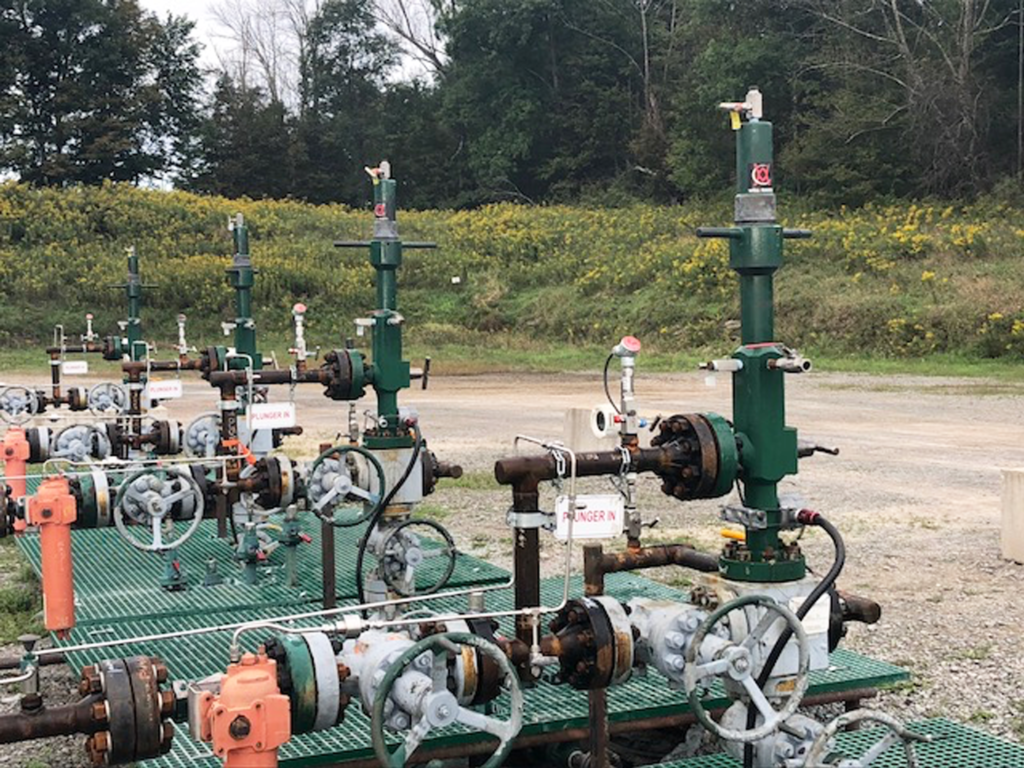
During production, solids may precipitate or settle out of produced fluids in the production equipment. These solids may eventually build up to the extent that they impair production & plug the production equipment. Various plunger lift tools can help mitigate the build-up these solids in the production tubing.
Sand Deposits
Modern completion methods typically involve pumping large volumes of proppant (silica sand, ceramics, or bauxite grains) into hydraulically fractured formations. Post completion, during initial flow-back, excess proppant is often deposited in the production equipment. Many domestic on-shore operators will use a clean-out plunger to mechanically wipe the production tubing prior to installation of artificial lift. Clean-out plungers are designed to mobilize & transport settled solids. This enables operators to mechanically clean their production tubing prior & prevent subsurface equipment from pugging off.
Paraffinic Deposits
Paraffin production can plug off tubing completely, even in free-flowing wells. This is a common incidence both in modern unconventional & legacy conventional wells.
Various liquids rich unconventional wells produce high volumes of paraffin. A DJ Basin Operator resolved their struggles with paraffin deposition by deploying venturi plungers to prevent paraffin deposits completely plugging the tubing in newly drilled horizontal wells. This mitigated significant costs for lost production & expensive chemical treatment previously found necessary used to control deposition.
Other legacy & conventional reservoirs have long been associated with paraffin deposition issues. A Chinese operator was able to extend their mean time between thermal paraffin treatments from days to multiple months by installing a viper plunger system.
Scale Deposits
Hydrocarbon production usually results in production of associated formation brines. Formation brines have long been associated with scale deposition. Scale tends to precipitate in the production equipment where PVT conditions transition sharply. Scale deposits, of various types, can completely plug production equipment. Quite often, this can result in expensive mechanical or chemical cleaning costs. Inhibition can also incur significant treatment costs.
Unconventional operators in high-rate, high Gas-Liquid Ratio (GLR) Marcellus wells often install plunger lift equipment to mitigate scale build-up prior to the onset of liquid loading. In these cases, the plunger mechanically removes scale deposits from the production tubing to prevent accumulation.
Legacy Rocky Mountain operators with deep-set, in low GLR conventional wells frequently make use of specialty scale mitigation plungers. These plungers remain in the lower portion of the tubing string & help agitate precipitates back into suspension during plunger lift cycles. Other specialty plungers are designed to mechanically clear & clean the seating nipple during each plunger cycle.
Corrosion Byproduct Deposits
Common corrosion byproducts, such as FeS, FeCO3, & other insoluble precipitates can plug production equipment. Worse, these byproducts are the formed from the essential ferrous production equipment installed in a well at high cost. Worse yet, degradation & mechanical compromise of production equipment can result in even more high cost intervention. In the worst cases, severe degradation can result in the loss of the well.
A proper chemical testing & treatment program is essential to controlling both the formation & deposition of FeS, & FeCO3, & other byproducts. Of greatest help to any corrosion control program, however, is effective deliquification of the production equipment. Removing liquids (especially formation waters) from a production system prevents the corrosion associated with submerging ferrous equipment in salt water. As an added bonus, effective deliquification is often associated with production uplift. This results in both the reduction of chemical treatment costs & addition of revenue from increased production. The net result is improved free cash flow.






